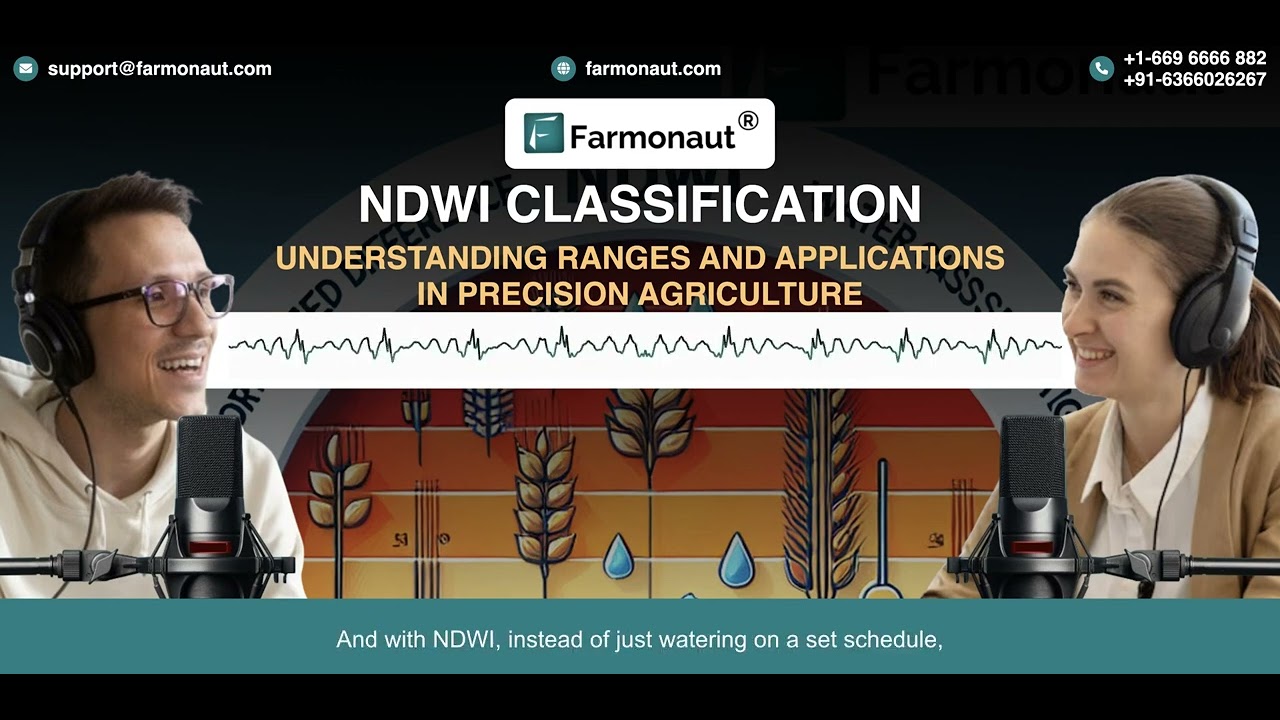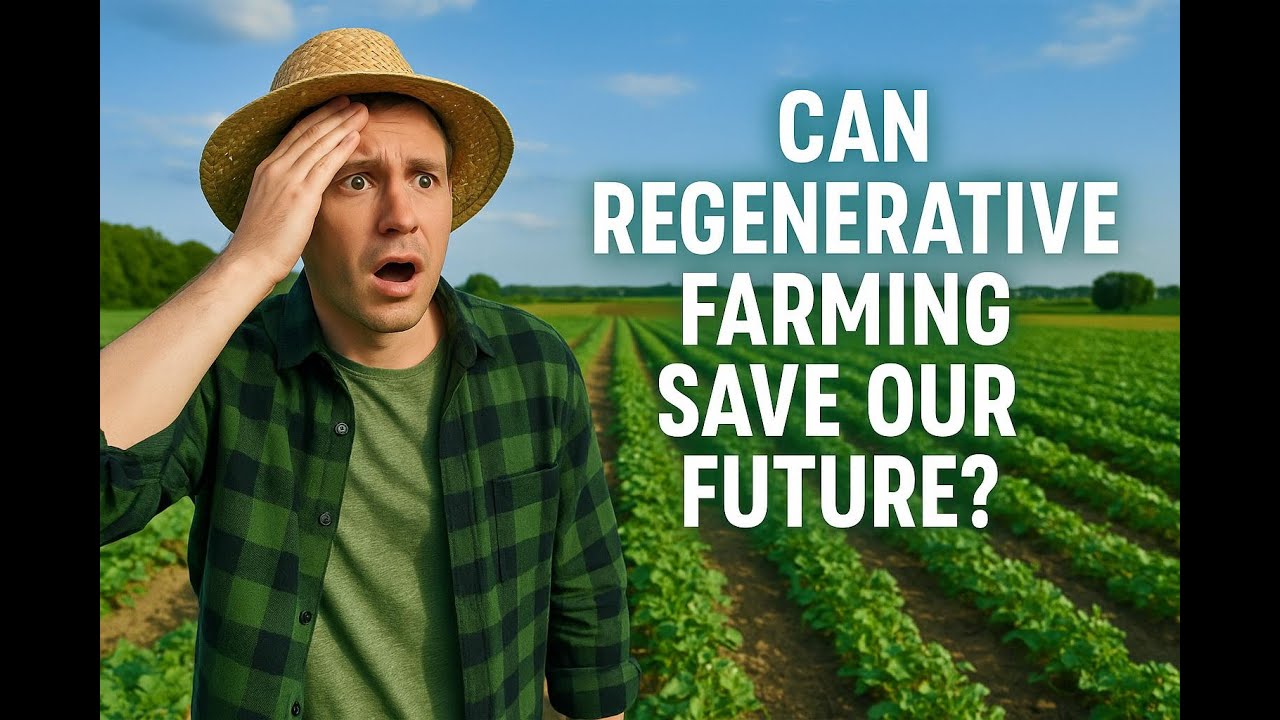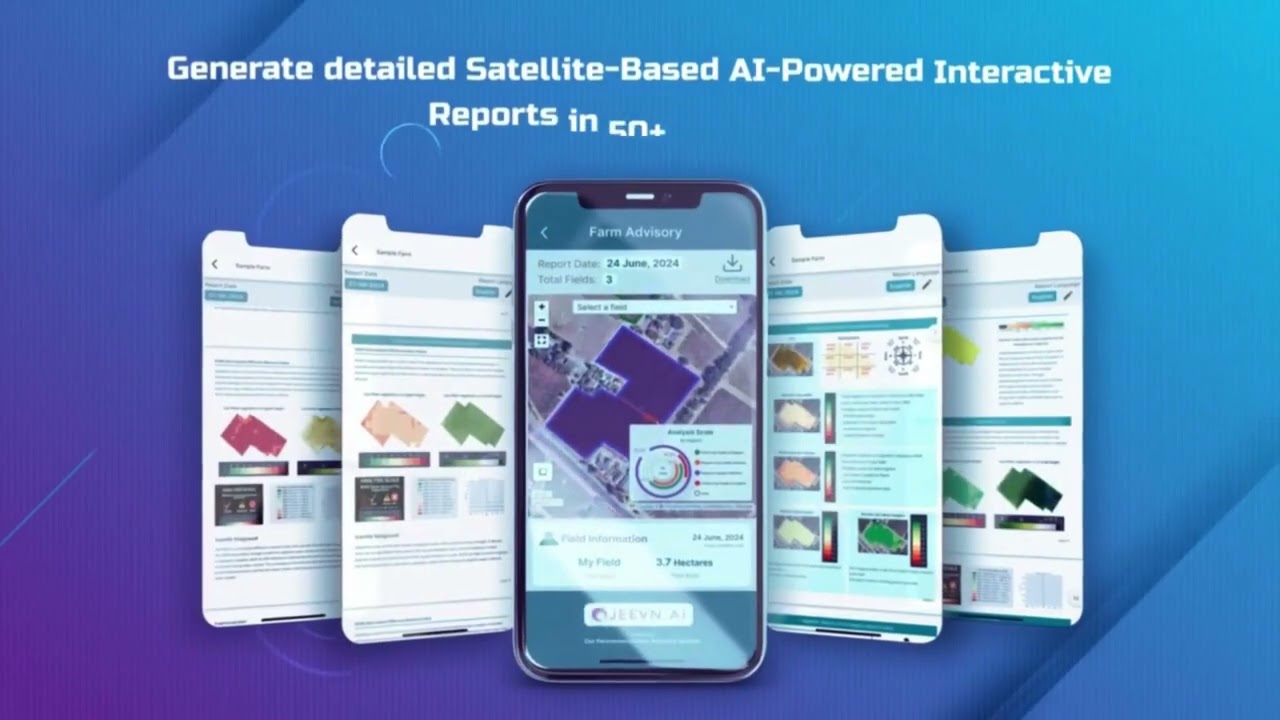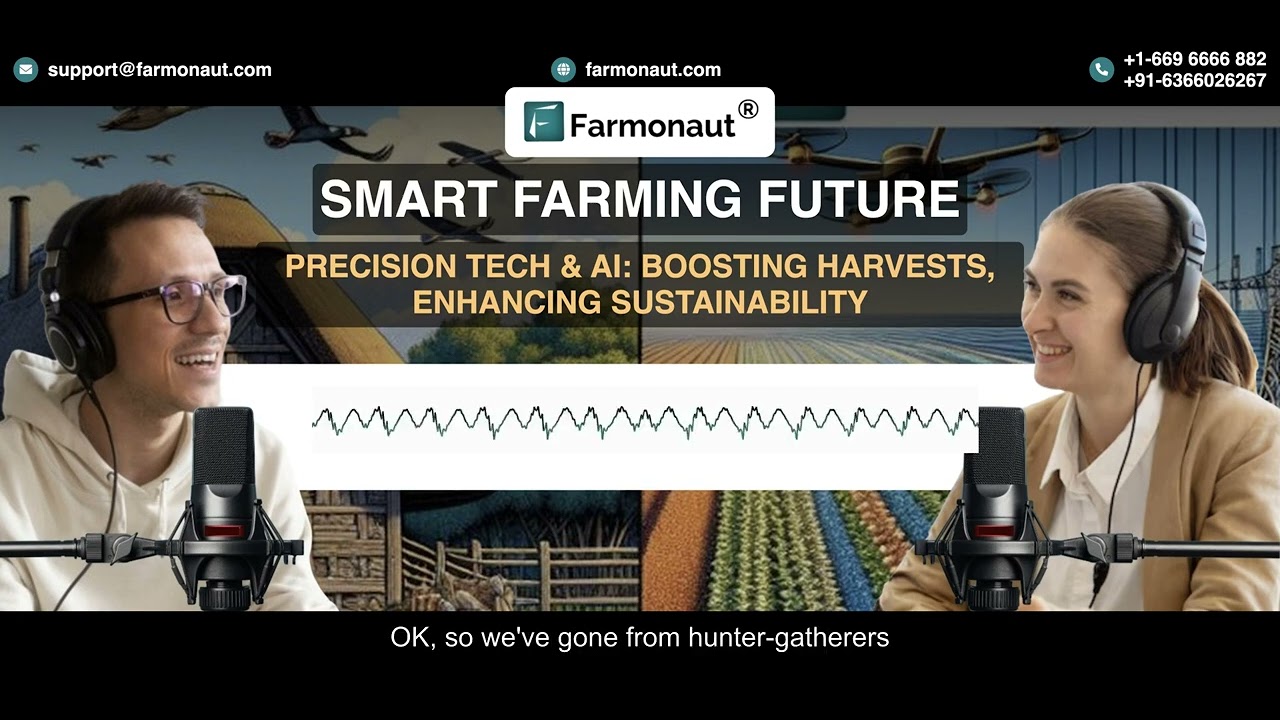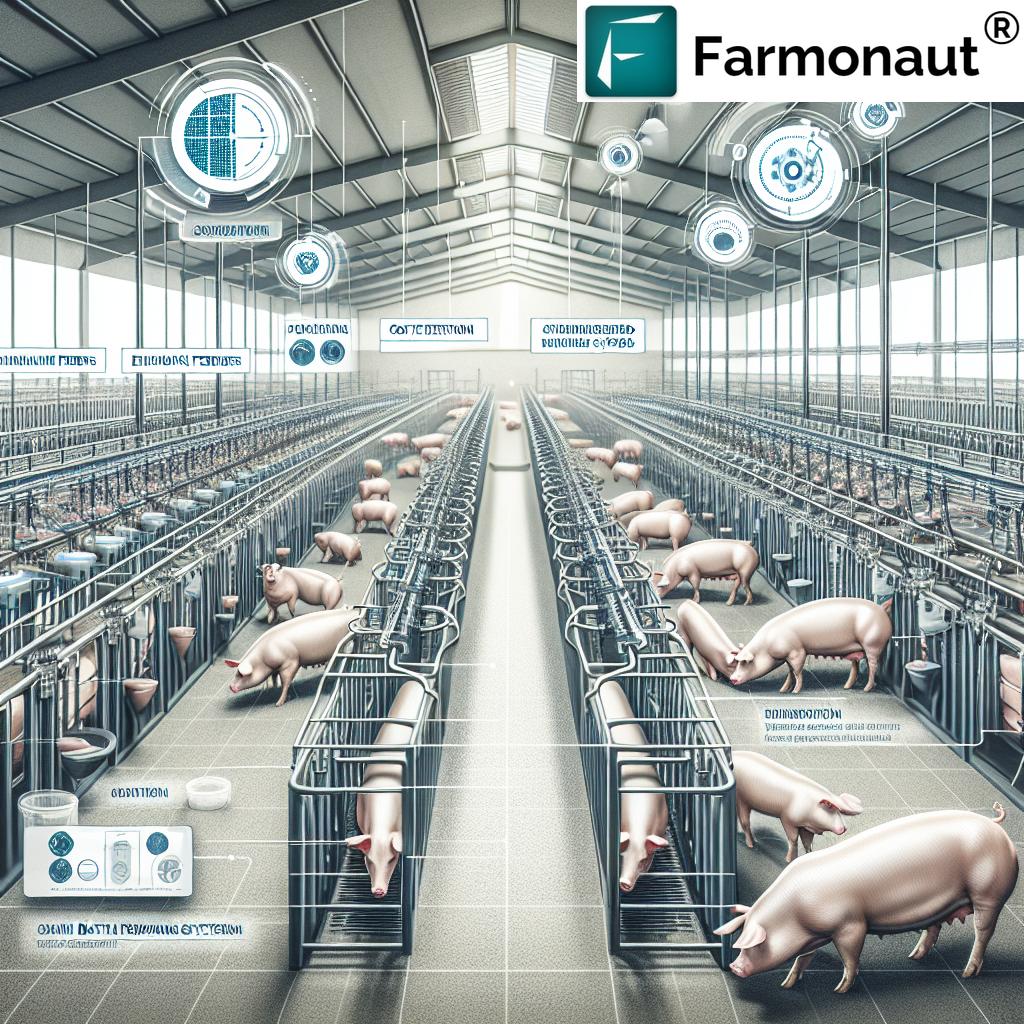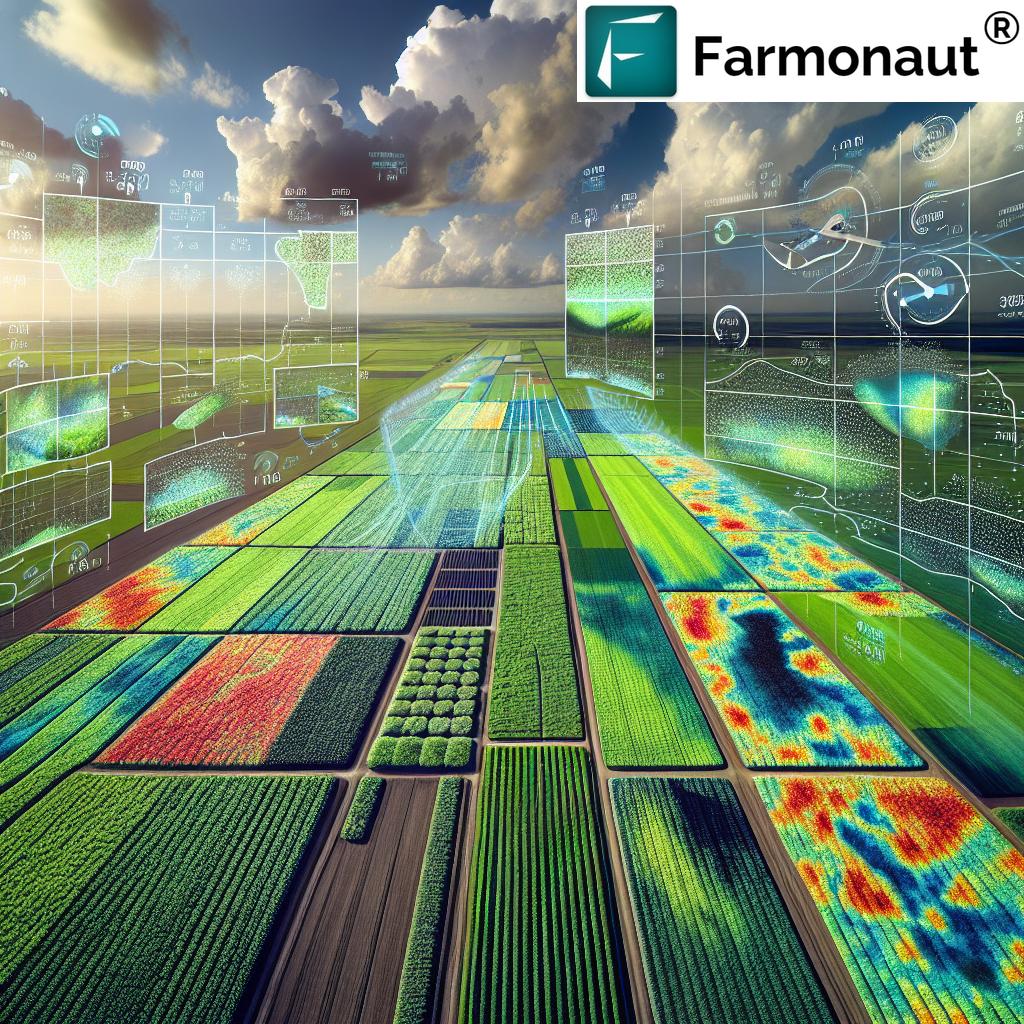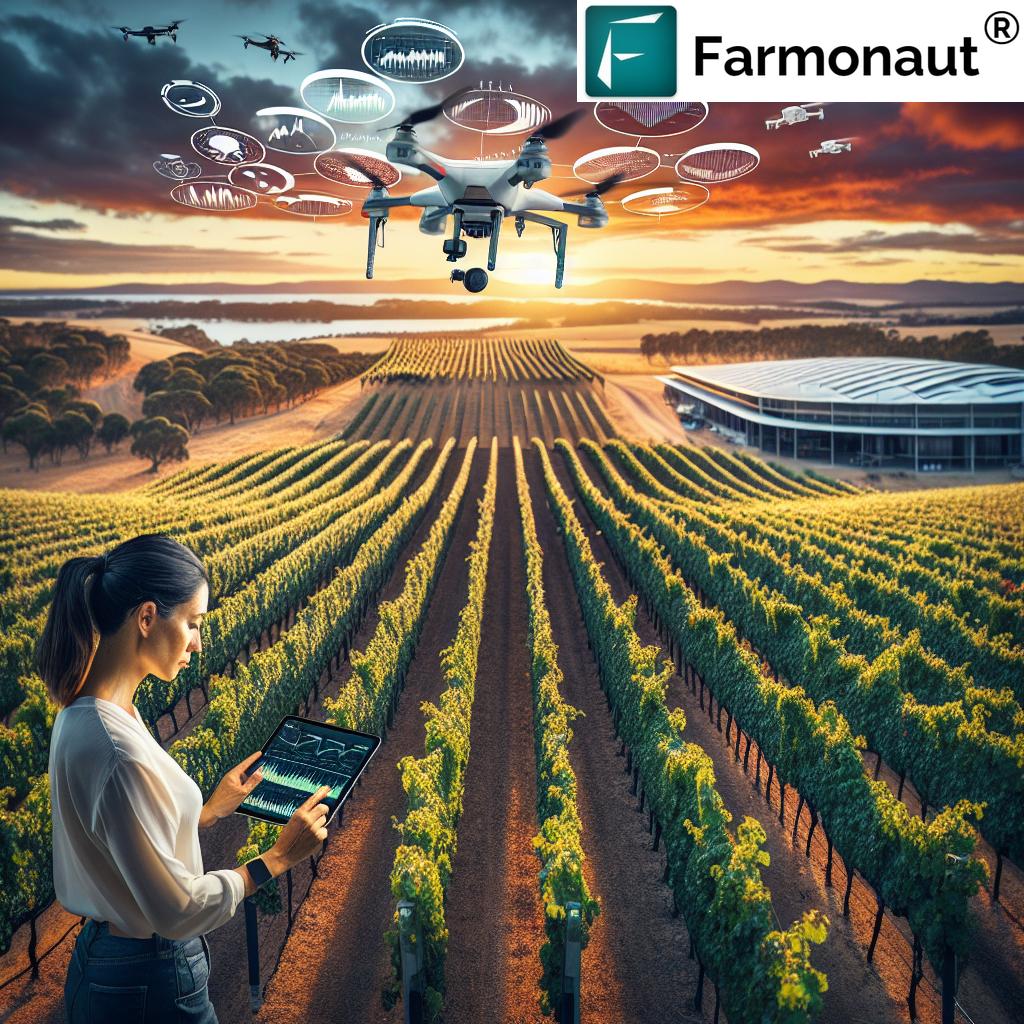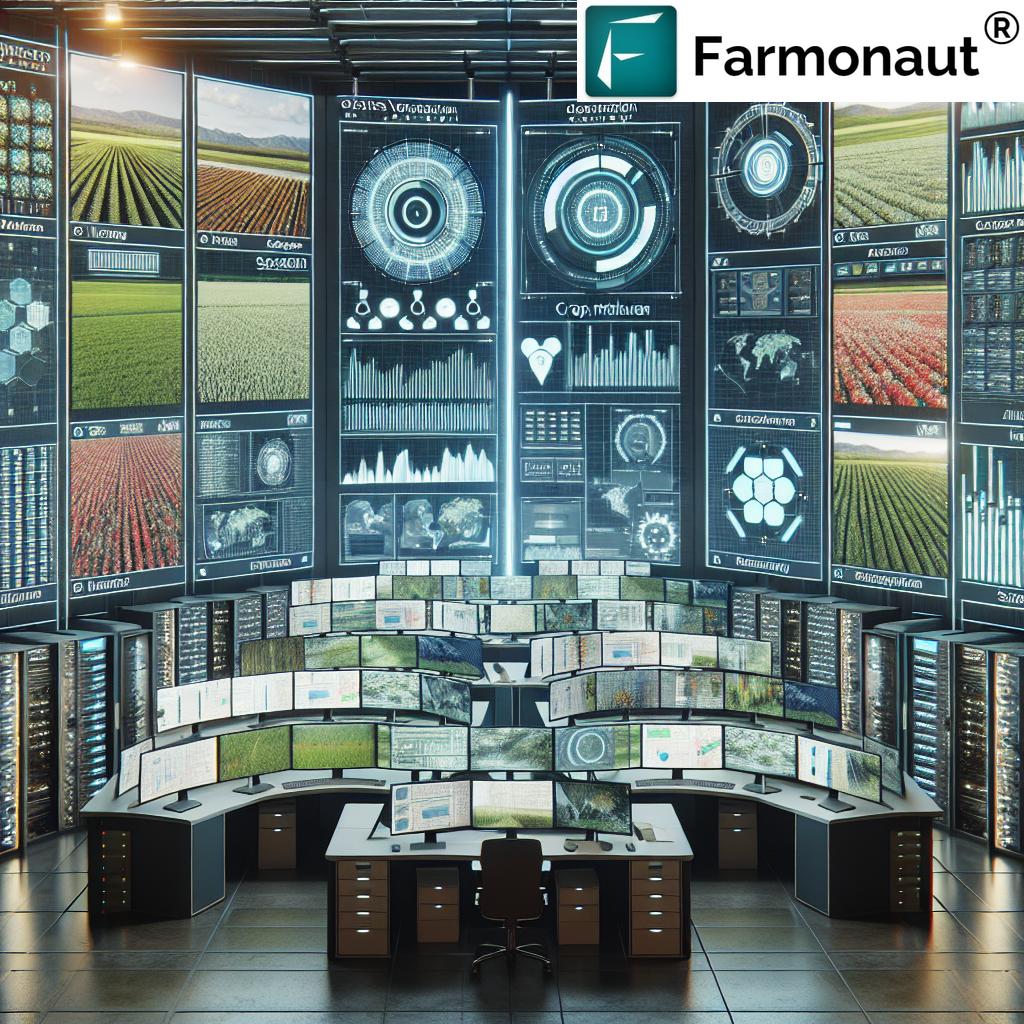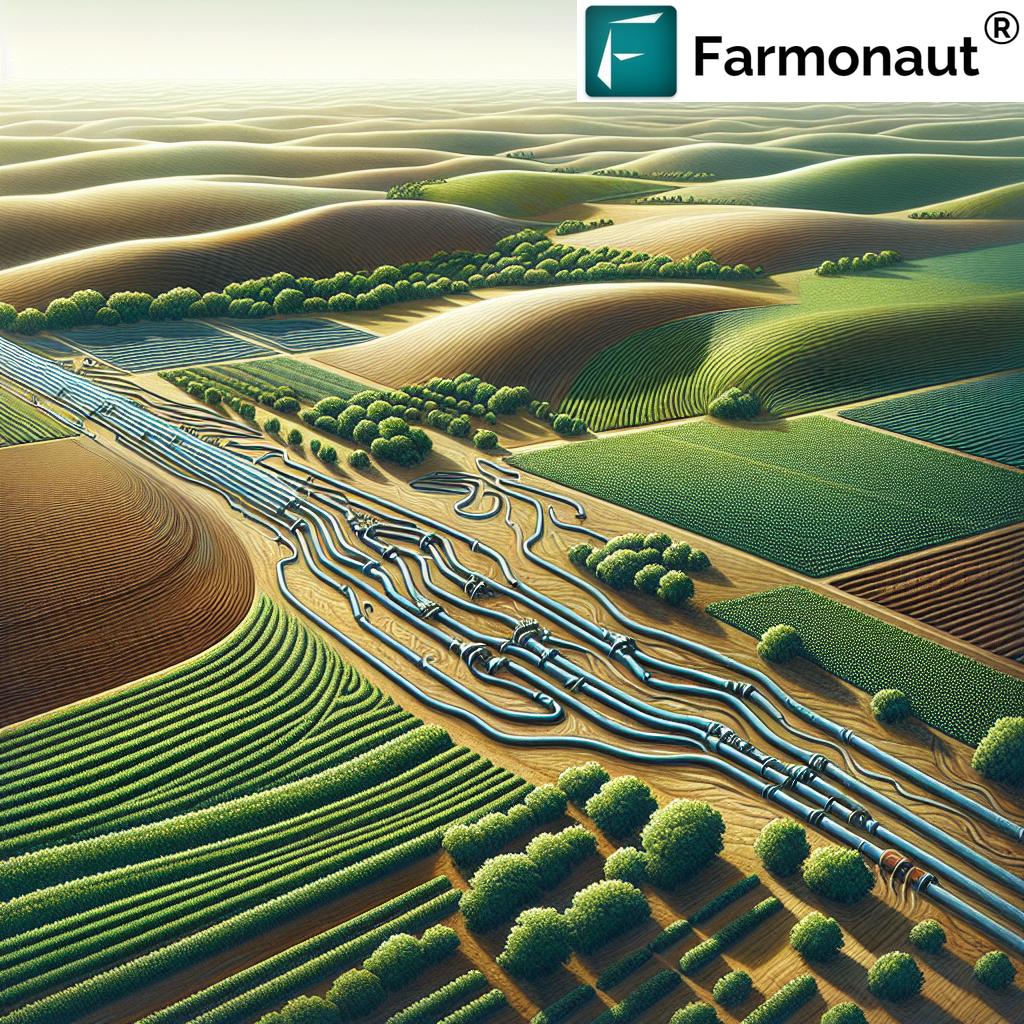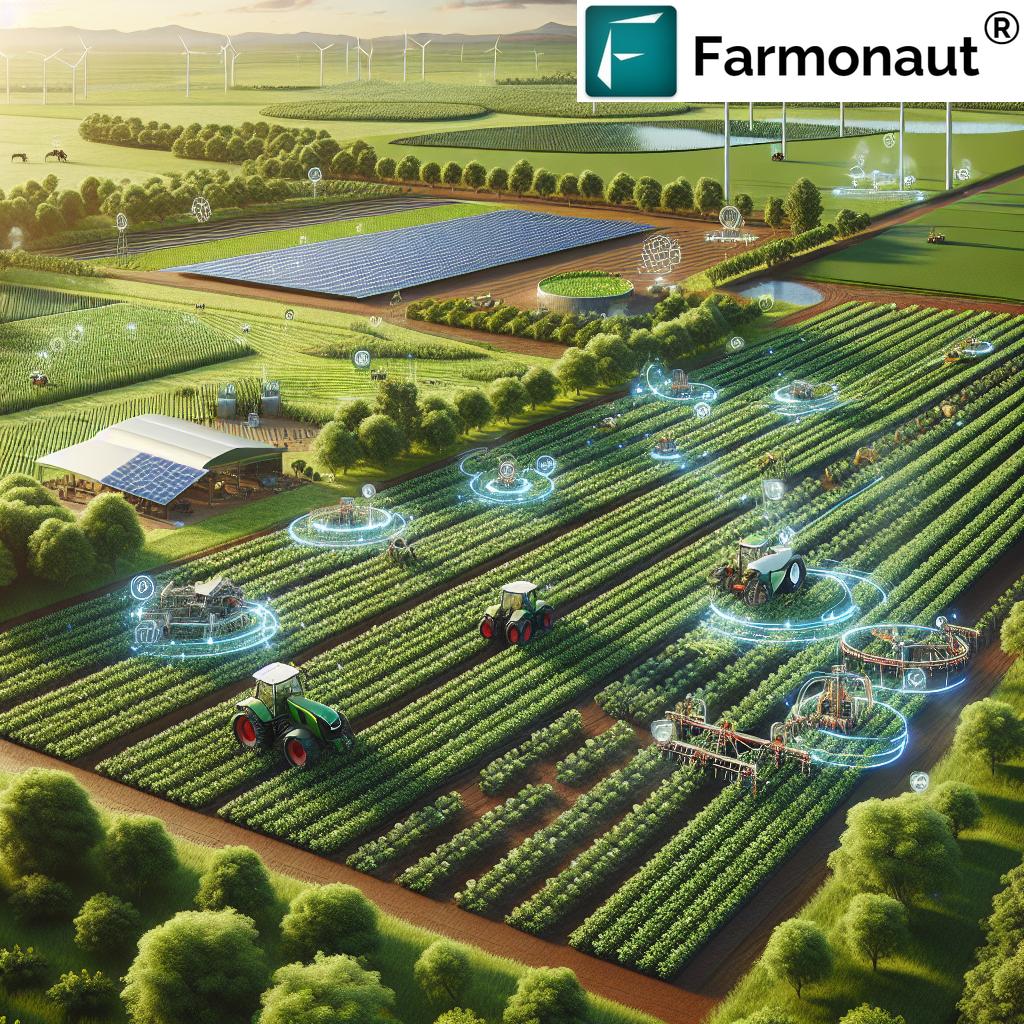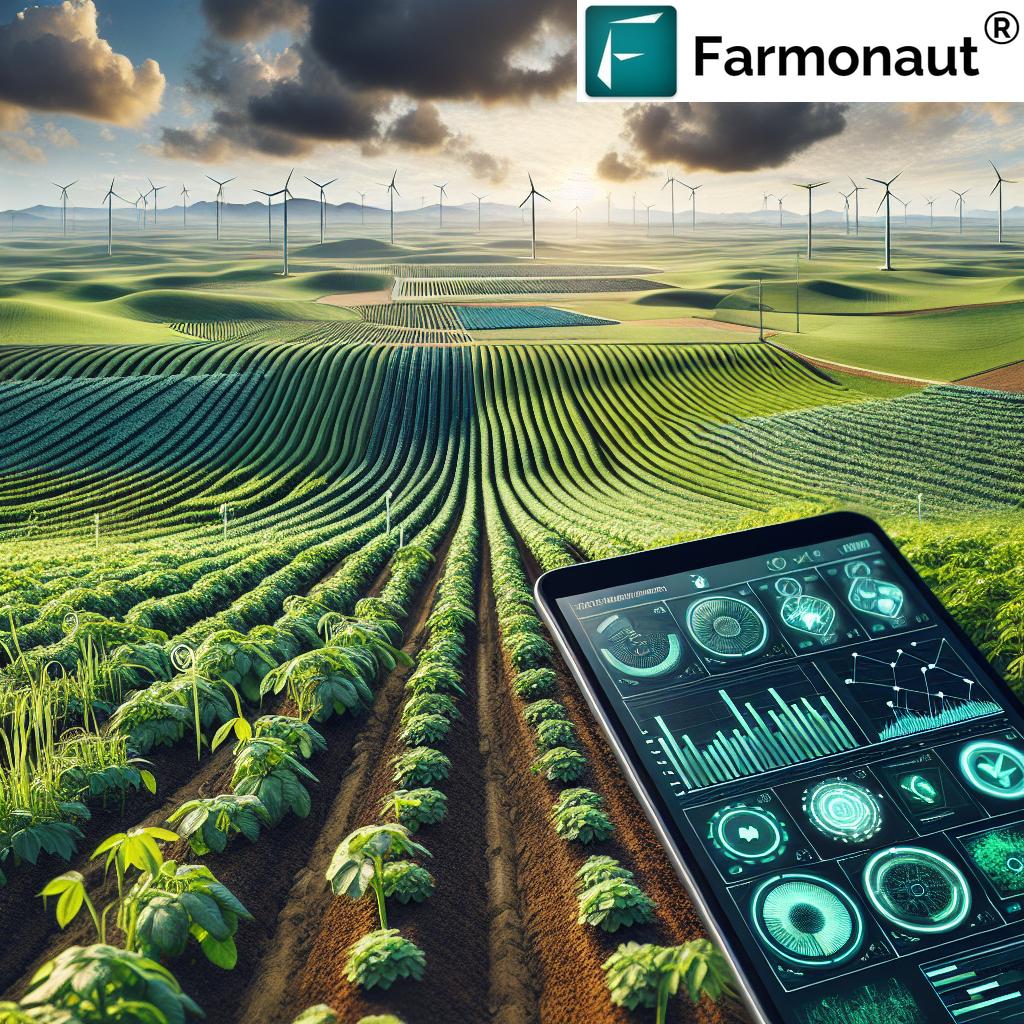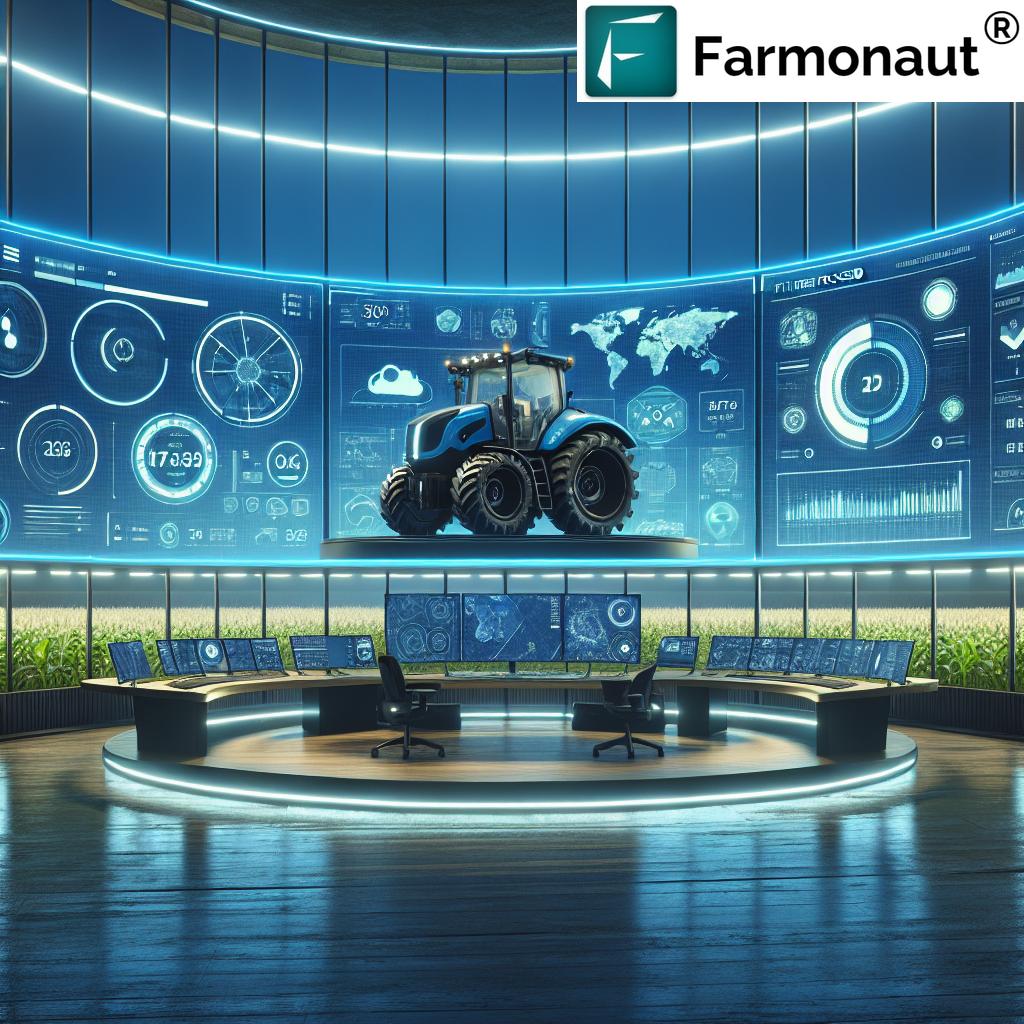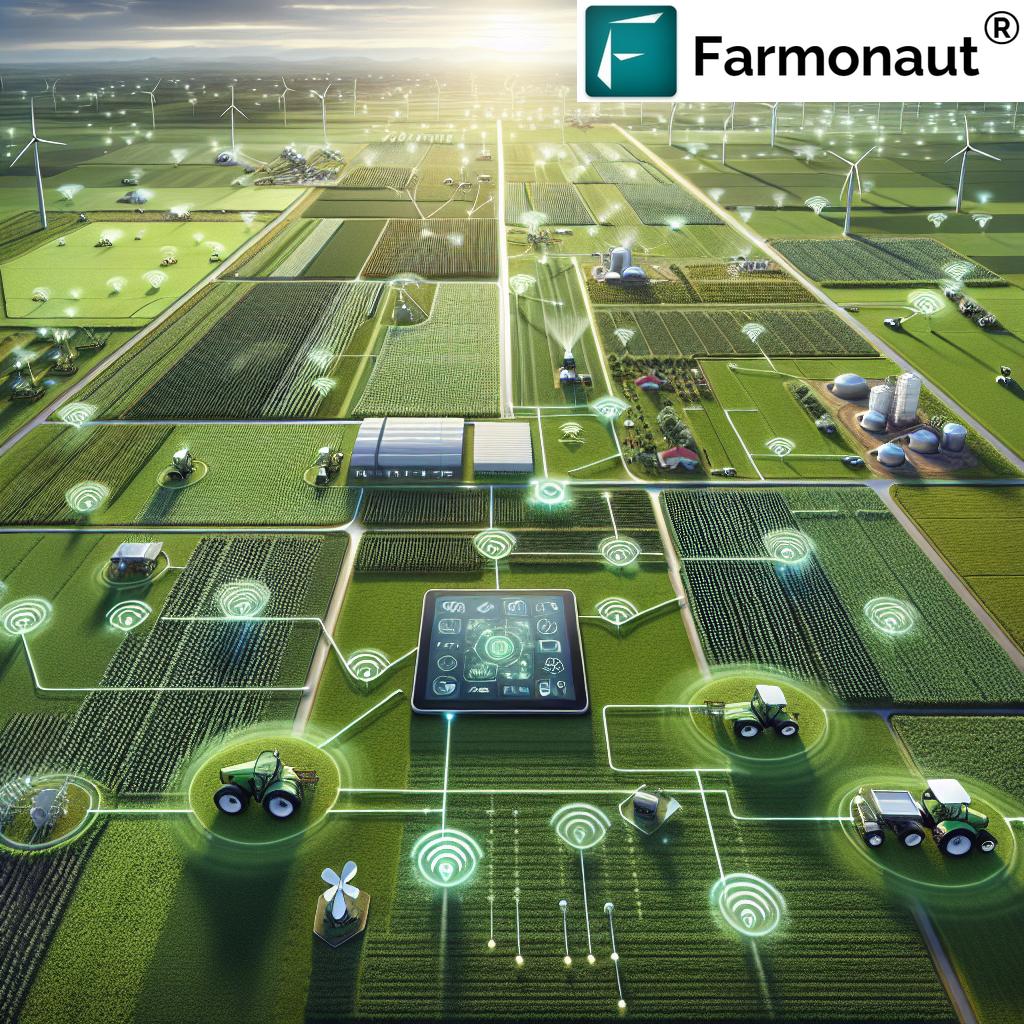Efficient Farmland Use: 7 Top Strategies for Agriculture
Maximizing Land Use Efficiency: Strategies for Sustainable Farming in 2025
“Up to 60% of farmland efficiency can be improved by integrating sustainable soil and water management practices.”
In a world facing mounting population pressures, rapid climate change, and the stark reality of finite arable land, it is crucial to answer: how can we make the most efficient use of our limited farmland? As we step into 2025, the urgency to optimize scarce agricultural resources for ensuring food security and sustainable farming is higher than ever. This challenge requires combining tried-and-tested soil, water, and manure management with technological innovations and data-driven land use strategies.
In this comprehensive article, we explore the top 7 strategies for maximizing land use efficiency in agriculture in 2025 and beyond. We delve into advanced agricultural practices, the science of land capability classification, and provide actionable insights to guide the optimal utilization of each farmland area. We also answer the most-asked questions, such as “how do I make the most of manures I produce on my farmland?” and “which land capability class is the most ideal for farming and has the fewest limitations restricting the use of the land?” while keeping our focus on sustainability, efficiency, and productivity.
Table of Contents
- Understanding Land Capability for Optimal Farmland Use
- Comparative Strategies Table: 7 Top Strategies for Efficient Farmland Use
- 1. Land Capability Classification: The Foundation of Efficiency
- 2. Efficient Water Use in Agriculture: Smart Irrigation & Conservation
- 3. Maximizing Soil Fertility: Optimal Manure & Nutrient Management
- 4. Crop Rotation & Cover Cropping: Enhancing Resource Efficiency
- 5. Precision Agriculture & Advanced Technology Integration
- 6. Integrated Pest Management: Sustainable Crop Protection
- 7. Vertical Farming, Intercropping, and Space Optimization
- Leveraging Technology for Efficient Land Use: Farmonaut’s Contribution
- Frequently Asked Questions on Land Use Efficiency in Agriculture
- Conclusion: The Future of Efficient Farmland Use
Understanding Land Capability for Optimal Farmland Use
To achieve land use efficiency in agriculture, we must first understand the land capability classification system. This system is used to assess the suitability of soil and terrain for various agricultural activities. It categorizes land from Class I (most suitable) to Class VIII (least suitable), assisting farmers and agricultural planners in maximizing yields while minimizing environmental risks and input costs.
- Class I (Ideal/Fewest Limitations): The most suitable, with minimal limitations such as low risk of erosion, good drainage, and high natural fertility. Best for intensive farming.
- Class II: Slight limitations such as mild slopes or moderate erosion risk; still highly productive with good management.
- Classes III–V: Increasing limitations like lower fertility, drainage problems, stoniness, or slopes. Suitable for controlled cropping with improved technology and conservation.
- Classes VI–VIII: Least suitable, with serious limitations. Best for grazing, forestry, or conservation rather than cropping.
Which land capability class is the most ideal for farming and has the fewest limitations restricting the use of the land? The answer remains: Class I. However, as scarcity of premium land grows, it is essential to optimize less ideal lands through technology and sustainable management.
Comparative Strategies Table: 7 Top Strategies for Efficient Farmland Use
| Strategy | Estimated Yield Improvement (%) | Water Savings (%) | Soil Health Benefit (1-5) | Resource Efficiency Level | Sustainability Impact |
|---|---|---|---|---|---|
| Land Capability Classification (Optimal Land Allocation) | 15–30% | 10–12% | 4 | High | Prioritizes best land for cropping; reduces degradation risk |
| Drip & Micro-irrigation | 15–25% | 35–60% | 3 | High | Maximizes water use; reduces runoff/evaporation |
| Advanced Manure Management & Composting | 10–20% | 14–18% | 5 | Medium | Boosts soil organic matter and nutrient cycling |
| Crop Rotation & Cover Cropping | 10–15% | 10–20% | 5 | High | Improves biodiversity, reduces soil exhaustion |
| Precision Farming & Tech Integration | 25–50% | 20–30% | 4 | High | Cuts input waste, tailors actions to exact needs |
| Integrated Pest Management (IPM) | 8–18% | ~7% | 4 | Medium | Reduces chemical use; preserves beneficial species |
| Vertical Farming & Intercropping Systems | 28–70% | 30–60% | 3 | High | Maximizes productivity per footprint; less land required |
1. Land Capability Classification: The Foundation of Efficiency
Focus Keyword: Land Use Efficiency in Agriculture
Optimizing land use efficiency in agriculture starts with a thorough understanding of each land parcel—from its soil properties to its terrain characteristics and climatic context. This is precisely where land capability classification plays an indispensable role.
- Why Allocate Crop Types by Land Class? Assigning crops to lands based on capability maximizes yields, reduces crop failure, and minimizes input costs (like fertilizers and irrigation).
- How to Assess? Use a systematic approach—evaluate soil type, depth, drainage issues, rockiness, erosion risk, and current fertility using expert mapping or satellite tools.
- What if you have non-Class I/II Land? Adopt improved management practices, irrigation systems, and targeted input application to convert limitations into opportunities.
We recommend using remote-sensing technology such as satellite-based terrain analysis to assess optimal crop fit and monitor ongoing suitability. Farmonaut’s Large-Scale Farm Management Solution enables landowners and agribusinesses to visualize, categorize, and monitor their land’s capability in real time, thus supporting informed, data-driven decisions for efficient farmland use.
2. Efficient Water Use in Agriculture: Smart Irrigation & Conservation
Focus Keyword: Efficient Water Use in Agriculture
No discussion on land use efficiency in agriculture is complete without addressing efficient water use in agriculture. Water is a limiting resource globally, subject to variable climate events and increasing competition. Practices and technologies that improve irrigation efficiency and reduce water losses directly contribute to higher productivity per unit of land.
- Drip & Micro-irrigation: Deliver water directly to the root zone, dramatically reducing runoff and evaporation losses compared to flood irrigation.
- Soil Moisture Sensors: Facilitate real-time decisions on “when and how much” to irrigate, maximizing both yield and water use efficiency.
- Rainwater Harvesting: Store seasonal rainfall for off-season irrigation and recharge groundwater.
- Conservation Practices: No-till farming and mulching help conserve soil moisture.
In 2025, the integration of satellite-based moisture monitoring and AI-powered advisory systems—such as those available on Farmonaut’s platform—provides growers with actionable, field-level irrigation recommendations. Enhance your resource management further via our Satellite API and API Documentation for seamless integration into your farm management system.
“Advanced manure management can reduce agricultural greenhouse gas emissions by nearly 30% by 2025.”
3. Maximizing Soil Fertility: Optimal Manure & Nutrient Management
Focus Keyword: How Do I Make the Most of Manures I Produce On My Farmland?
Making the most of manure produced on your farmland is a cornerstone of both sustainable farming and optimal land use efficiency. Manures (livestock), crop residues, and green wastes are vital sources of nutrients. But how do you maximize their impact while minimizing losses?
- Proper Storage & Handling: Prevent nutrient leaching and pathogen runoff by using covered, well-drained manure storage facilities.
- Composting and Processing: Composting stabilizes nutrients, reduces pathogens, and enhances soil organic matter when applied. It’s crucial to align application timing with the crop’s nutrient uptake period for maximum efficiency.
- Precision Application: Base manure rates and placement on soil test data. Site-specific application Greatly reduces both nutrient runoff and input wastage.
- Integration with Synthetic Fertilizers: Balanced nutrition is often achieved by complementing manures with tailored synthetic fertilizers as per the demands of each cropping cycle.
- Crop Rotation and Cover Cropping: Use legumes and cover crops to further cycle nutrients and reduce dependency on purchased inputs.
If you are asking, “how do I make the most of manures I produce on my farmland?“, remember: it’s not just about how much manure you have, but when and how you use it. Adopting advanced composting techniques and integrating both organic and synthetic sources enables enhancing soil fertility sustainably—directly improving both yield and long-term soil health.
Our Carbon Footprinting Solution helps farms monitor and reduce their carbon footprint by quantifying how management practices, including manure usage, impact total emissions and sustainability.
4. Crop Rotation & Cover Cropping: Enhancing Resource Efficiency
Focus Keyword: Increasing Land Use Efficiency in Agriculture
Crop rotation and cover cropping are time-tested techniques for increasing land use efficiency in agriculture. They ensure sustainable productivity even on less suitable lands by supporting nutrient cycling, suppressing pests, and improving soil structure.
- Diversify Crop Rotations: Alternate between cereals, legumes, and oilseeds to disrupt pest cycles and optimize nutrient utilization.
- Use Nitrogen-Fixing Crops: Incorporate legumes and green manures that naturally recycle nitrogen.
- Seasonal Cover Crops: Plant ryegrass, clover, or vetch during off-season periods to protect and replenish soil. These crops help reduce erosion risks and lock in soil moisture.
Rotations and covers provide a proven answer to “how can we make the most efficient use of our limited farmland?” They offer synergy—one year’s crop supports the next—while enhancing overall soil health, reducing fertilizer needs, and protecting against environmental loss.
For precision tracking of your crop cycles and fields, explore our Blockchain Traceability Platform. It adds transparency, documents best practices, and can enhance product value in markets demanding sustainable sourcing.
5. Precision Agriculture & Advanced Technology Integration
Focus Keyword: Land Use Efficiency in Agriculture in 2025
With technology supporting agriculture, the era of blanket, one-size-fits-all management is ending. Precision agriculture systems are rapidly changing how farmers approach land use efficiency in 2025.
- Satellite and Drone Imagery: Monitor soil moisture, detect crop stress, assess plant population, and map variability on a field-by-field basis.
- Variable Rate Technology (VRT): Apply seeds, water, fertilizers, and pesticides only where and when needed. This reduces surplus, improves resource allocation, and lowers costs.
- AI and Machine Learning: Predict disease outbreaks, forecast yields, and suggest custom strategies for each field zone.
Our Farmonaut Satellite Technology platform combines AI, blockchain, and satellite data to help users monitor crop health, soil conditions, moisture, and more. We support both individual users and large businesses in making real-time, informed decisions about optimal land use strategies. Discover more about its benefits for large farms and agribusinesses on our Agro-Admin App page.
6. Integrated Pest Management: Sustainable Crop Protection
Focus Keyword: Combining Techniques for Higher Land Use Efficiency
Uncontrolled pest losses erode farmland productivity. Integrated pest management (IPM) combines biological, mechanical, and chemical controls to protect crops with minimal environmental impact.
- Biological Controls: Use beneficial insects and microbes that suppress pests naturally, reducing dependency on chemicals.
- Mechanical Controls: Utilize physical barriers or traps, and mechanical cultivation for weed and pest control.
- Targeted Chemical Use: Apply pesticides based on field scouting and predictive analytics, avoiding routine, unnecessary use.
- Monitoring & Decision Support: Leverage satellite and field-based monitoring to detect outbreaks early and guide interventions only where needed.
By combining traditional and technology-driven pest management, yields can be preserved while reducing environmental risk and conserving beneficial species in the ecosystem. Our Crop Loan and Insurance Verification Tools assist in documenting agronomic practices and risk mitigation—a valuable asset for accessing finance and insurance products.
7. Vertical Farming, Intercropping, and Space Optimization
Focus Keyword: Maximizing Farmland Productivity with Innovative Systems
With the growing scarcity of arable land, it is imperative to make every square meter count. Vertical farming and intercropping systems maximize yields and resource use on constrained areas and urban farmland.
- Vertical Farming: Grow crops in stacked layers (indoors, tunnels, or greenhouses). These systems use hydroponics or aeroponics for efficient nutrient cycling and significantly reduce water usage.
- Intercropping: Plant compatible crops together in the same field—e.g., legumes between rows of cereals—to make efficient use of sunlight, water, and soil nutrients. This improves total biomass production and can reduce pest pressure.
- Urban and Peri-Urban Farming: With new technology, non-traditional spaces are converted into productive farmland, enhancing local food supplies and resilience.
Such systems are central to increasing land use efficiency in agriculture for 2025. To get customized planning recommendations, our Plantation, Crop, and Forest Advisory App assists in optimizing planting strategies for any landholding.
Leveraging Technology for Efficient Land Use: How Farmonaut Supports Sustainable Intensification
At Farmonaut, our mission is to empower farmers, businesses, and governments with affordable, satellite-driven insights for resource management and operational efficiency. Leveraging multispectral satellite imagery, AI, and blockchain, we support:
- Crop Health Monitoring: Real-time field monitoring for NDVI, soil moisture, and nutrient status.
- Resource Management Tools: Plan irrigation, fertilization, and pest management based on satellite and AI data.
- Traceability Platforms: Transparency in supply chain management with blockchain for sustainable agriculture (Traceability Product Page).
- Fleet & Large-Scale Farm Management: Tools for operational oversight, vehicle route optimization, and efficient machinery deployment (Fleet Management).
- Carbon Footprint Tracking: Quantify and reduce emissions from farming, including detailed assessment of manure and soil management (Carbon Footprinting).
By implementing these technologies and digital tools, users can increase productivity, reduce losses, and ensure a more sustainable agricultural future.
Frequently Asked Questions on Land Use Efficiency in Agriculture
Q1: How can we make the most efficient use of our limited farmland?
A: Combine land capability classification with smart soil, water, and manure management. Implement advanced irrigation systems, perform precision farming with satellite data, practice crop rotation, and use both organic and synthetic fertilizers as suited to your context. Optimize cropping intensity and adopt vertical/intercropping methods where possible.
Q2: How do I make the most of manures I produce on my farmland?
A: Compost and process manure before application to reduce pathogens and improve nutrient availability. Time your application during periods of high crop demand. Utilize site-specific soil testing and combine with synthetic inputs judiciously for balanced soil nutrition.
Q3: What is the most efficient irrigation system in 2025?
A: Drip and micro-irrigation systems continue to outperform flood methods. Advances in soil moisture monitoring, with data integration from satellites and field sensors, enable real-time irrigation optimization for enhanced water savings and yield improvements.
Q4: Which land capability class is the most ideal for farming and has the fewest limitations restricting the use of the land?
A: Class I land offers the best conditions for crop farming, with minimal limitations related to soil fertility, drainage, and erosion. Favor this for intensive cropping, while using technology and conservation practices to optimize less suitable classes.
Q5: What technologies will define efficient agriculture in 2025?
A: Satellite monitoring (e.g., NDVI, soil moisture), AI-driven advisory, blockchain for traceability, fleet/resource management, and digital apps for large farm oversight are all crucial. Farmonaut’s platform enables users to integrate these cutting-edge solutions affordably and at scale.
Q6: How does improving farmland management contribute to sustainability?
A: Efficient use of soil, water, and manure minimizes resource depletion, raises productivity, and significantly reduces environmental impact by cutting emissions and nutrient losses. Sustainable intensification ensures food security for a growing population without expanding into fragile ecosystems.
Conclusion: The Future of Efficient Farmland Use
Developing a sustainable, high-yielding agricultural sector in 2025 and beyond demands a multi-pronged approach to land use efficiency. By understanding your land’s capability class, optimizing water and nutrient management, adopting modern technology, and implementing innovative farming systems, you can turn challenges into opportunities—no matter how finite or constrained your arable area may be.
The solutions discussed—from precision farming and IPM to vertical production systems—enable farmers and agribusinesses worldwide to make the most efficient use of our limited farmland. These strategies simultaneously contribute to climate resilience, environmental protection, and food security.
With the support of technology innovators like us at Farmonaut, every stakeholder in the agricultural value chain—from smallholders to corporates and governments—can harness affordable, precise satellite insights and resource management tools. By combining data-driven solutions with best practices in soil, water, and manure management, we move closer to a future where efficient, sustainable, and productive farming is not just possible, but the global standard.
Join us in shaping the next era of agricultural efficiency:
Try the Farmonaut App |
Explore our Satellite API |
Reduce Your Farm’s Carbon Footprint |
Implement Blockchain Traceability |
Digitize Your Large-Scale Farm |
Optimize Farm Fleet Operations









